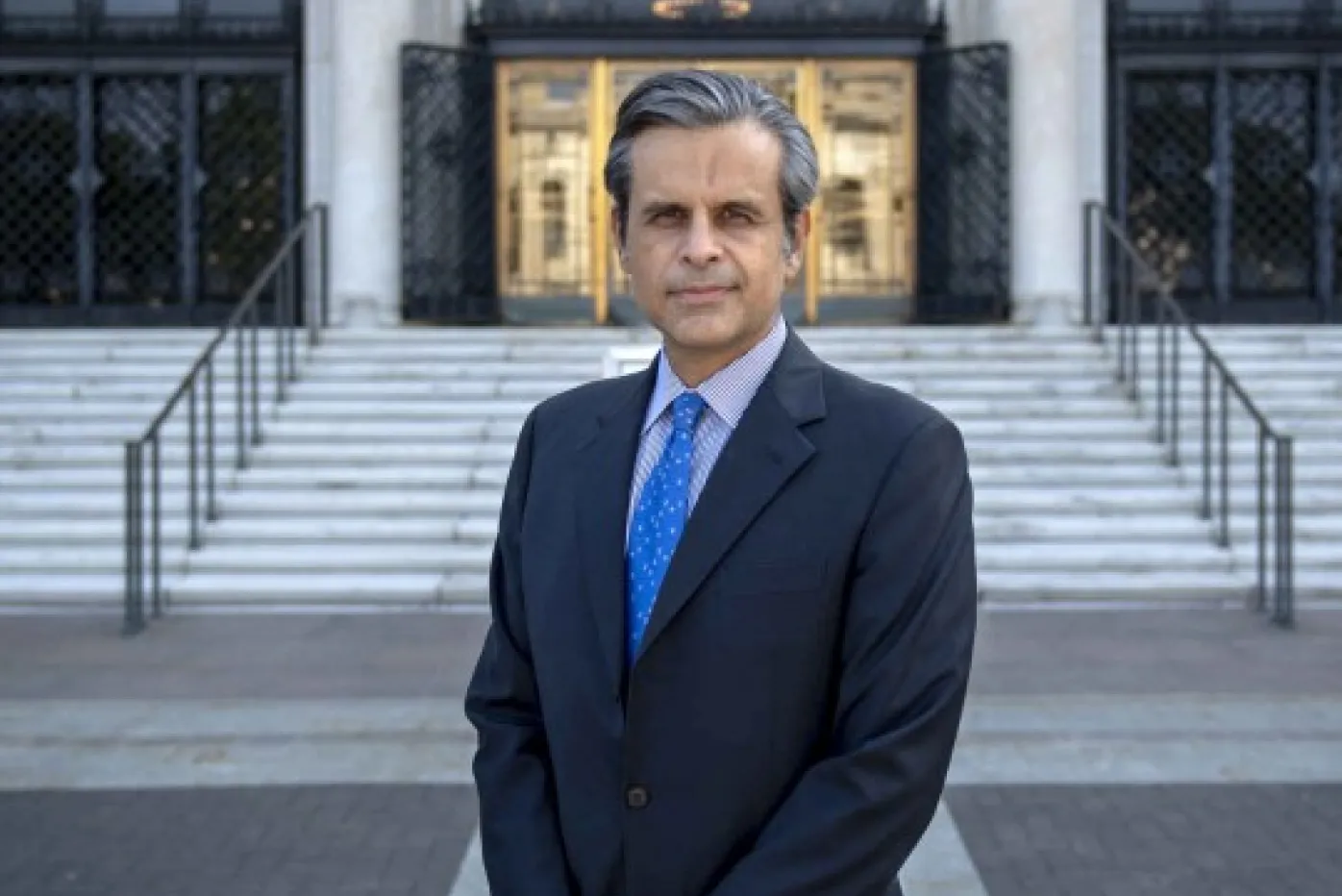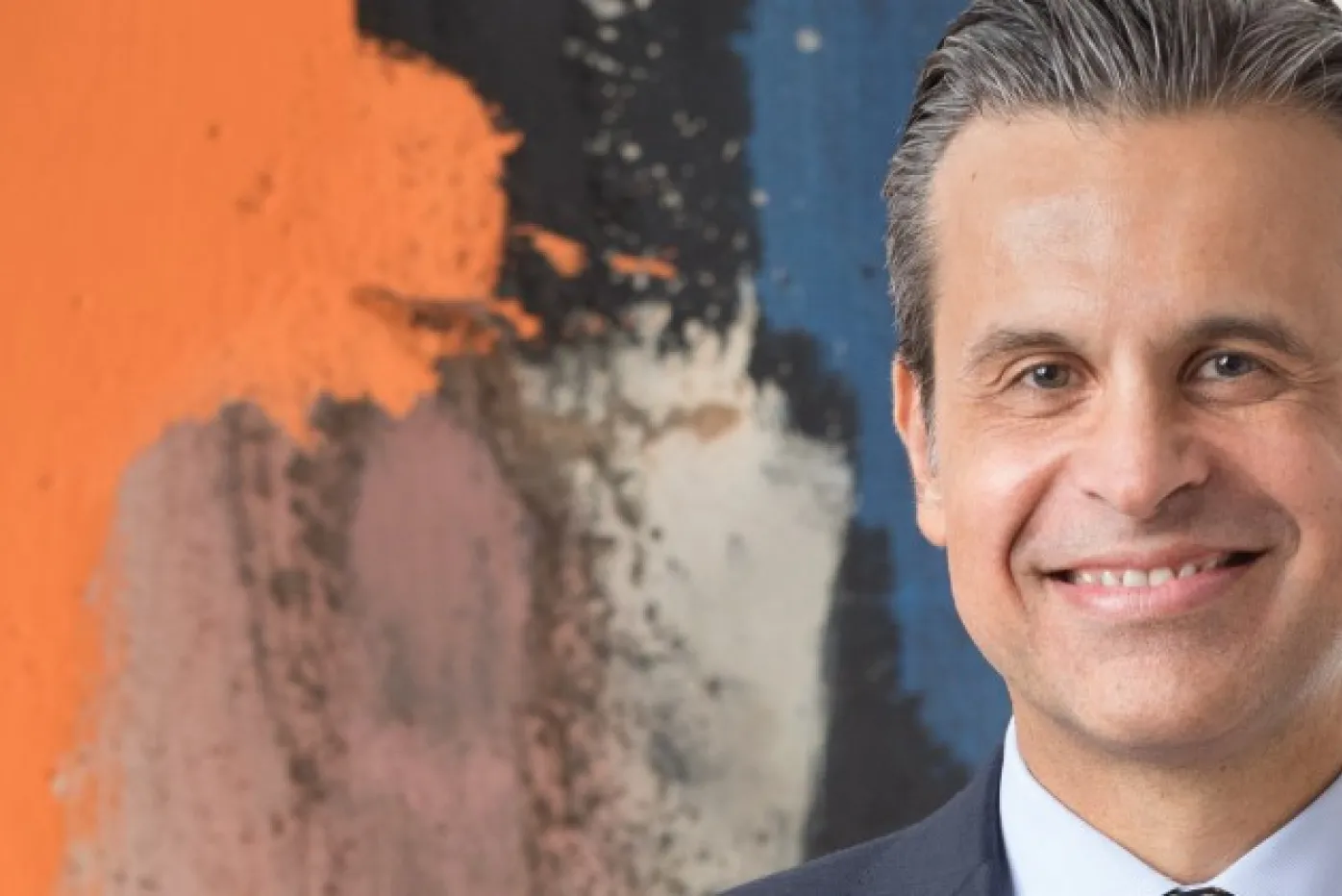From the Director, November 2018
Updated Jul 20, 2022
Opening the Robert and Katherine Jacobs Asian Wing with the Community
The fall months are usually very busy ones at the DIA. In October we were packed with programs and exhibitions. And this month marks the opening of our new Asian galleries, the celebration of our annual Gala, and peak attendance for the year during the Thanksgiving weekend including the visit of more than 200 distinguished clowns for Detroit’s world famous parade. Those who work at the DIA know the passion and intensity that it takes to get the job done with excellence, and I am very grateful to all our teams for their commitment.
I was thinking about all of this on a Monday after regular work hours when I had the opportunity to go down to the galleries to check on the progress of the new Asian wing reinstallation -- the Robert and Katherine Jacobs Asian Wing! The galleries were very quiet but one could almost hear the echoes of the team members’ voices which were discussing, implementing, solving, and collaborating to create the best possible experience for our visitors. Some of the works were already installed and in our Buddhist gallery, which includes a contemplation space, one could see the DIA’s celebrated Chinese sculpture representing Shakyamuni as an ascetic subtly awakening after six years of meditation. The work is one of our masterpieces and arguably the best of its kind in American museums. Next to the peacefulness of this object one finds our new Tibetan Buddhist bronze, Yamantaka and Vajravetali, full of exploding movement and intense energy, which we recently acquired with very generous acquisition funds from the Ernst and Rosemarie Kanzler acquisition endowment.
The Indian and Southeast Asian gallery offers enlightening opportunities to enjoy contemporary international and local art together with historical pieces. As we have learned from our communities, it is important to show that creative traditions are alive and flourish throughout Asia, and that artists continue to develop new practices. A very inspiring red disc by Anish Kapoor, acting like a magnet, forcefully attracts visitors into the space, while to the left a bronze statue of the Hindu god Ganesha welcomes everyone with its joyful action. This deity with an elephant head is well known in Asia as the one worshipers invoke as remover of obstacles – and I make sure to look at it each time I cross the area.
The Japanese gallery will be re-opened as it was last year, respectfully featuring the deep concepts of stillness and movement, with a new rotation of works. Across from it one will be able to delve into the art of Korea. During the process of reinstalling this gallery, officials and curators from South Korea visited the DIA to examine our collection of Korean art. Following their visit, we were granted an approval for art quality and received financial support from the National Museum of Korea.
In the Chinese galleries, visitors can explore ancient objects for life and the afterlife, and participate in a centuries-long tradition of active engagement with Chinese paintings. A photomural transports the visitor to a mountain landscape resembling some of the painted scenes in the gallery. One handscroll, which displays a series of beautifully rendered scenes, has been reproduced in a digital interactive that lets visitors advance the image by turning a handle on one end. To preserve the painting, we can only display a portion at a time, and we cannot allow anyone to handle the object, but this “digital scroll” provides a similar experience for the visitor and allows for the exploration and study of this beautiful Chinese painting.
The reinstallation of the Robert and Katherine Jacobs Asian Wing has been the product of very committed, high-quality work and extraordinary resources implemented over three years. Throughout the process, our museum professionals have worked in dialogue with more than 150 residents of the region, whose feedback, ideas, and perspectives have helped shape the plans for the new galleries. The majority of these participants are members of different Asian communities of our supporting tri-county area. To all of them and to the DIA team, I am deeply grateful. I know these galleries will be a delight for our visitors and an inspiring educational tool for all the students that we serve in Oakland, Wayne and Macomb counties.

DIA Director, Salvador Salort-Pons in Rivera Court
Opening the Robert and Katherine Jacobs Asian Wing with the Community
The fall months are usually very busy ones at the DIA. In October we were packed with programs and exhibitions. And this month marks the opening of our new Asian galleries, the celebration of our annual Gala, and peak attendance for the year during the Thanksgiving weekend including the visit of more than 200 distinguished clowns for Detroit’s world famous parade. Those who work at the DIA know the passion and intensity that it takes to get the job done with excellence, and I am very grateful to all our teams for their commitment.
I was thinking about all of this on a Monday after regular work hours when I had the opportunity to go down to the galleries to check on the progress of the new Asian wing reinstallation -- the Robert and Katherine Jacobs Asian Wing! The galleries were very quiet but one could almost hear the echoes of the team members’ voices which were discussing, implementing, solving, and collaborating to create the best possible experience for our visitors. Some of the works were already installed and in our Buddhist gallery, which includes a contemplation space, one could see the DIA’s celebrated Chinese sculpture representing Shakyamuni as an ascetic subtly awakening after six years of meditation. The work is one of our masterpieces and arguably the best of its kind in American museums. Next to the peacefulness of this object one finds our new Tibetan Buddhist bronze, Yamantaka and Vajravetali, full of exploding movement and intense energy, which we recently acquired with very generous acquisition funds from the Ernst and Rosemarie Kanzler acquisition endowment.
The Indian and Southeast Asian gallery offers enlightening opportunities to enjoy contemporary international and local art together with historical pieces. As we have learned from our communities, it is important to show that creative traditions are alive and flourish throughout Asia, and that artists continue to develop new practices. A very inspiring red disc by Anish Kapoor, acting like a magnet, forcefully attracts visitors into the space, while to the left a bronze statue of the Hindu god Ganesha welcomes everyone with its joyful action. This deity with an elephant head is well known in Asia as the one worshipers invoke as remover of obstacles – and I make sure to look at it each time I cross the area.
The Japanese gallery will be re-opened as it was last year, respectfully featuring the deep concepts of stillness and movement, with a new rotation of works. Across from it one will be able to delve into the art of Korea. During the process of reinstalling this gallery, officials and curators from South Korea visited the DIA to examine our collection of Korean art. Following their visit, we were granted an approval for art quality and received financial support from the National Museum of Korea.
In the Chinese galleries, visitors can explore ancient objects for life and the afterlife, and participate in a centuries-long tradition of active engagement with Chinese paintings. A photomural transports the visitor to a mountain landscape resembling some of the painted scenes in the gallery. One handscroll, which displays a series of beautifully rendered scenes, has been reproduced in a digital interactive that lets visitors advance the image by turning a handle on one end. To preserve the painting, we can only display a portion at a time, and we cannot allow anyone to handle the object, but this “digital scroll” provides a similar experience for the visitor and allows for the exploration and study of this beautiful Chinese painting.
The reinstallation of the Robert and Katherine Jacobs Asian Wing has been the product of very committed, high-quality work and extraordinary resources implemented over three years. Throughout the process, our museum professionals have worked in dialogue with more than 150 residents of the region, whose feedback, ideas, and perspectives have helped shape the plans for the new galleries. The majority of these participants are members of different Asian communities of our supporting tri-county area. To all of them and to the DIA team, I am deeply grateful. I know these galleries will be a delight for our visitors and an inspiring educational tool for all the students that we serve in Oakland, Wayne and Macomb counties.

